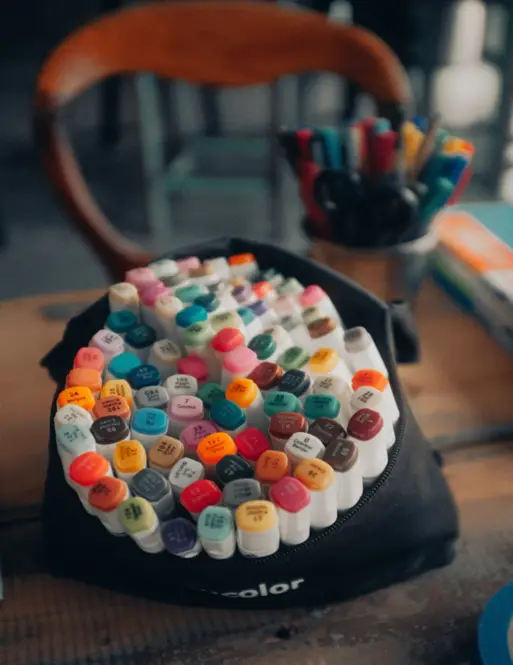Are you considering using markers on your ceramic or pottery projects but wondering if they will withstand the high temperatures of a kiln? While markers are a popular choice for decorating ceramics, their heat resistance may vary depending on the type of marker and the firing temperature.
It’s a common misconception that any marker will survive the heat of a kiln, but that’s not always the case. Some markers contain ingredients that can burn off, fade, or bleed when exposed to high temperatures, leaving unsightly marks on your finished piece. Therefore, choosing the right type of marker is essential to ensure the best results.
In the following paragraphs, we will explore different types of markers, their heat resistance, and the factors that influence their performance in the kiln. When you’ve completed reading the article, you will better understand the markers suitable for your ceramic projects and those not.
What is a marker? What are the different types of markers used in ceramics?
| Type of Marker | Pros | Cons |
| Oil-based Sharpie | Resistant to fading and water | Requires baking to become permanent |
| Acrylic Paint Pen | Available in a wide range of colors | Not dishwasher safe |
| Porcelain Marker | Permanent and dishwasher safe | Limited color options |
| Ceramic Paint Marker | It can be used on glazed and unglazed surfaces | Not as durable as other markers |
| Enamel Paint Marker | Resistant to fading and water | Requires baking to become permanent |
Markers are essential for any ceramic artist, allowing precision and control in decorating their work. But what exactly is a marker? Simply put, it’s a pen or brush filled with ink or paint that can be used to draw or paint designs onto clay or ceramic surfaces.
Various types of markers are available, each with unique characteristics and use. For example, water-based markers are easy to use and ideal for beginners, while alcohol-based markers offer more vibrant colors and are great for creating detailed artwork. Other types include oil-based, paint, and ceramic markers, each with advantages and disadvantages. Choosing the correct type of marker depends on the artist’s style and preferences and the specific project you are making.
What happens to markers when exposed in the kiln?
Regarding ceramics, a kiln is an essential tool used to transform raw clay into hardened pottery. But the question that we are looking for is –what happens to the markers used to decorate the clay when fired in the kiln? While markers are great for outlining designs on pottery, most of them can’t withstand the kiln’s extreme temperatures.
Regular markers can’t withstand the high temperatures of a kiln; specialized markers are designed for use on ceramics and can withstand the heat of firing. These markers are specifically formulated to remain intact during firing. In addition, they’re made with ceramic materials that can withstand the high temperatures of the kiln, ensuring that your designs will last on your pottery.
The ARTISTRO Acrylic Markers are mainly designed to be used on ceramic projects. Therefore, these markers have the unmatched ability to withstand high temperatures when fired in a kiln. If you are looking for any specific markers to use on your ceramic wares, these markers from ARTISTRO are worth a try.

Tips to make the most of markers in ceramics:
Perhaps we already discussed how markers react when exposed to high-heating temperatures in a kiln. Here are some of how you can make the most of them:
- Choose correctly: Look for markers specifically designed for use on ceramics, such as oil-based or enamel-based markers. Water-based markers may not be as durable.
- Prep your surface: Ensure your ceramic surface is clean and dry before starting. Any dirt or oil could prevent the marker from adhering correctly.
- Practice first: It’s always a good idea to practice on a spare piece of ceramic first. This will help you understand how the marker works on your particular surface and allow you to experiment with different techniques.
- Allow for drying time: Depending on the type of marker you use, you may need to allow some drying time before touching the surface or adding additional colors.
- Please avoid contact with water: While some markers may be water-resistant, it’s best to avoid contact with water whenever possible to ensure your design stays intact.
Conclusion:
Whether a marker will burn off in the kiln depends on the type of marker and the temperature and duration of firing. It’s essential to use a high-quality, heat-resistant marker designed explicitly for ceramics to ensure the best results. Using a regular marker can lead to unpredictable outcomes and ruin your hard work.
Don’t let a subpar marker ruin your ceramics project. Instead, trust the ARTISTRO Acrylic Markers and let your creativity shine in beautiful, long-lasting colors.







